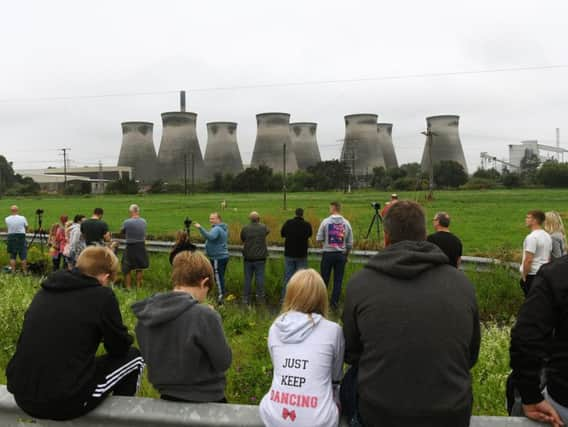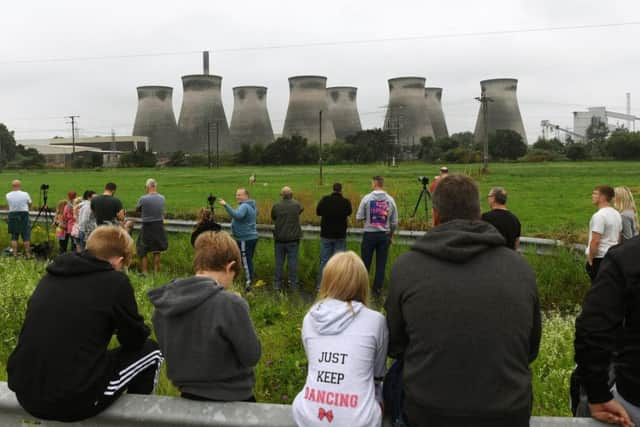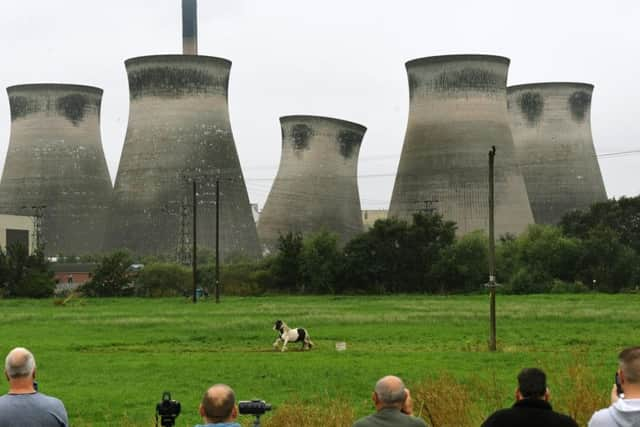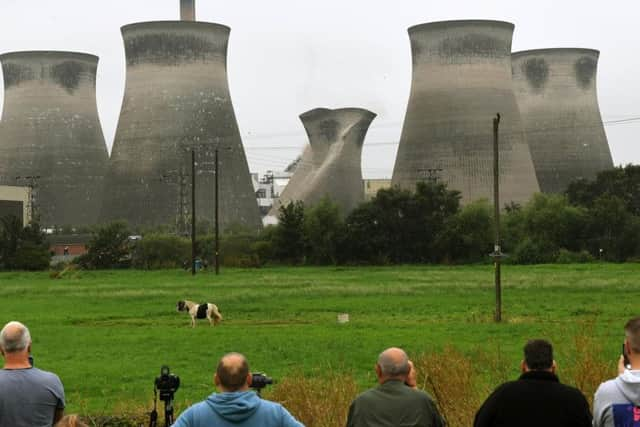End of an era begins as cooling tower is demolished at Ferrybridge Power Station


For many a motorist, you knew were nearly home from your travels when you whizzed past the eight imposing cooling towers that sat between the myriad of the A1, the old A1 and the M62 stretches of road.
It has provided employment to many a local living in the nearby villages from cleaners to electrical engineers, but, Ferrybridge C Power Station is set to become a picture of the past following its closure in 2016.
Advertisement
Hide AdAdvertisement
Hide AdIt was de-commissioned due to rising costs and being unable to meet new emissions legislation set by the European Parliament and today saw the first in a series of planned demolitions that will see all eight towers brought to the floor.


Rolling road blocks were put in place by police as 10am approached this morning and spectators got out of their cars on the carriageway as the old A1 was brought to a standstill. Several hundred people flocked to the site to see the spectacle, which was signified by a klaxon and a ripple of explosions before the 114 feet high tower, known as number 6, crumpled in a cloud of dust in a demolition that took less than 15 seconds.
One of them was former employer Steven Parkin, of Sherbern-in-Elmet, who was an electrical engineer from the 1980s until 2000 and watched the demolition with his family, including seven-year-old grandson Wilbur Southern who thought "it was cool".
Mr Parkin, 69, said: "Some years ago I worked there and have worked at several power stations. This one is a landmark and it is the end of an era. We were waiting about half an hour and it was worth it. The next one will be even better so I think we will come back and watch that."
Advertisement
Hide AdAdvertisement
Hide AdNicola Irwin was watching the demolition from a hill by the Prince of Wales Colliery in Pontefract where about 10 other people had made the climb to the top.


She said: "Just before the demolition, the motorway traffic stopped and it was so quiet - like at an eclipse when the birds stop chirping. We head the klaxon sound and knew there was a few minutes left to go.
"We heard the blast and then a few moments the tower falling started to whoops and cheers from our little group. You know you're nearly home when you see the cooling towers. It'll be odd not seeing the full set of them and even stranger when they all come down."
Four more of the towers are set to be demolished in October say SSE, the owners of Ferrybridge C, and the site is set to be cleared by 2021.
Advertisement
Hide AdAdvertisement
Hide AdThey added that the future of the site is yet to be decided.


Charlie Cryans, Director of Construction at SSE, said: “The removal of this cooling tower marks the start of the major demolition activities at Ferrybridge Power Station, with work due to continue over the next two years. This first demolition will act as a pilot for a bigger event scheduled for October, when up to four of the cooling towers will be removed.
“The coal-fired station at Ferrybridge proudly produced electricity for more than 50 years, and at its peak could meet the energy needs of nearly two million people. The start of these demolition works is a landmark moment in the UK’s energy transition, as we move towards a low-carbon future.”